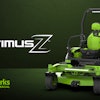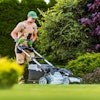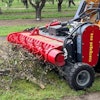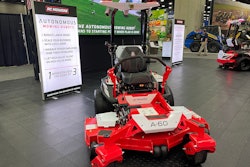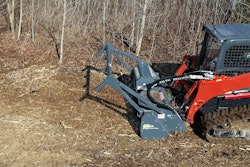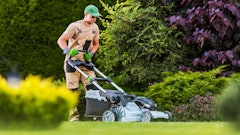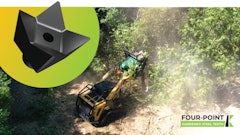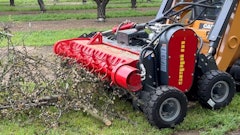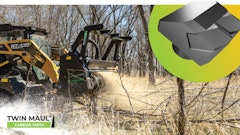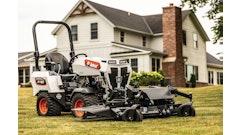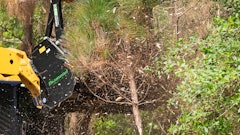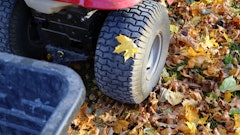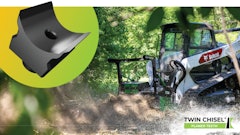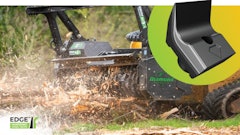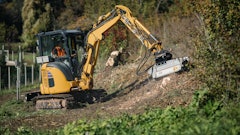
Benjamin Farrer, owner of Lawns Etc., in Lafayette, Indiana., and Ryan Miller, operations manager, maintenance division, for Hidden Creek Landscaping in Hilliard, Ohio, provide insight on mulching best practices.
Why mulch
When it comes to educating clients about why mulching is so important, Miller says there are a few reasons.
“One of the reasons is aesthetics—it looks nice and provides a nice contrast to the landscape,” Miller says.
Another reason is weed suppression, Miller says, adding that there will be a difference in weed growth in mulched beds versus unmulched beds.
“We put down a preemergence granular prior to any bulbs going down,” Miller says. “It creates a barrier between the surface of the ground and the mulch that’s going to be put on top of it to mitigate the amount of weed seeds that will germinate. The mulch is what helps enable that chemical to do its job and mitigate as much weed growth as possible."
Finally, the mulch also adds another layer of insulation to keep soil moist during the hotter and drier months.
“It keeps moisture in the soil and helps water to get into the plant material and not dry out so quickly,” Miller says.
Timing
Lawns Etc. provides mulching as an add-on service to spring cleanups and performs the services in March.
“We touch base with our customers to set it up—I like to do mulching before regular maintenance and mowing starts,” Farrer says.
Hidden Creek Landscaping also does its best to perform mulching services earlier in the season, weather permitting, and it highly encourages customers to sign up for mulching services as part of its annual maintenance package.
“We also want to make sure that we're making the best decisions for our clientele, so they have an effective mulching for the entire season,” Miller says. “If we put it down in January, by June it would be completely faded or washed out by torrential rains, and if we put it down in July, half the year would be done.”
Miller adds that the past few years, the winters have been mild, allowing the company to start mulching operations as early as late February.
“If we have 60-degree days in February, we use that to our advantage, so that when we do have those rain days or those rain weeks in March and April, it doesn't put us back so far to where we have to wait until June or July to finish mulching,” Miller says.
Top tips
Right materials
To increase efficiency, Lawns Etc. partners with a local mulch company that delivers directly to the jobsite.
“When I do a mulch job, I tell them how much I need and at what address, and they literally dump it, and we install it,” Farrer says. “It made a lot of sense rather than trying to hold it all ourselves and wasting time going to and from where the mulch is located. It also makes it cleaner for us.”
Farrer adds that customers were willing to pay for the upcharge of having the mulch delivered directly to the site.
Right tools
Incorporating the right tools into the operation is also key, Farrer says.
“Tools are the No. 1 thing as far as efficiency goes," Farrer says. "We’ve used pitchforks and wheelbarrows as we do all mulch by hand. There is equipment like Mulch Mates that help, or some companies use mulch blowers.”
Hidden Creek Landscaping uses Mulch Mates to help mitigate crews from having to shovel every single scoop of mulch into a wheelbarrow, saving on labor and decreasing fatigue among staff. The company also uses larger wheelbarrows to increase the load of mulch per trip and uses other pieces of equipment like a mower-mounted wheelbarrow to help move loads of mulch faster and easier.
From there, if a bed includes a lot of ground cover or plant material, crews will throw mulch by hand, but if it’s a wide-open bed, crews will dump the mulch into piles and spread it with rakes.
“It’s really what’s most efficient and practical for the property we’re on,” Miller says.
Quality work
To be sure the mulch is installed properly, Lawns Etc. also sweeps beds and cuts down old materials such as ornamental grasses before laying down mulch.
“That gives you a nice, clean slate to work from,” Farrer says.
Hidden Creek Landscaping also aims to provide the highest level of quality when it comes to mulching services.
“We’re looking for a nice even layer of mulch. We're looking down to the crowns of the plants, the perennials that are starting to poke through, and seeing if there is any mulch in those leaves," Miller says. "Do landscape lights need to be cleaned off? Is there a stone wall that has leftover mulch on it? The ultimate goal is for us to be in and out of a property with no evidence we were there except for the exact thing we were there to accomplish.”
Don't overmulch
Landscapers should be aware that more mulch is not always better. Landscape crews should be very cautious about how much mulch is put around the crown, stem or trunk of a plant.
“The industry standard for a lot of years was 2 to 3 inches of mulch throughout the entire mulch bed, but as more science comes out, if we have a mulch bed full of plant material, we try to avoid more than 1 to 1.5 inches of mulch, especially around the crown or root flare of that tree trunk.”
When trees are buried in mulch, otherwise known as “volcano trees,” it impacts its ability to survive.
“Long term, it could invite the potential for disease, and it can just essentially suffocate that plant,” Miller says.
Safety matters
To ensure crews are safe, Hidden Creek Landscaping meets every morning or previous evening to determine a game plan and equips crews with various tools to perform the work safely.
“It might be cones, or it might be flashing lights or another vehicle behind (the vehicle),” Miller says. “It might be somebody else is directing some traffic for a little while until the crew is done with that specific area. We also look at a map to see where we can park effectively to make sure we stay off of busy roads but still get our job done.”
The company also outfits crews with high-visibility uniforms.
Finally, it educates crews on hydration, proper fueling and heat stress and stocks each truck with coolers and ice.
“Mulching is not easy. It is a physically demanding part of the landscape industry,” Miller says. “It’s (about) providing them with the tools and the equipment in the field, but also giving them the education in the back end so they can make decisions for their own personal safety.”

